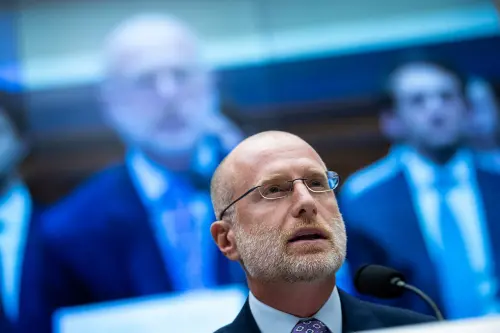This article is part of the Brookings Metropolitan Infrastructure Initiative’s “Digital Prosperity” blog series, which examines how regions across the country are using innovative strategies to respond to a range of digital inclusion challenges.
Access to broadband internet in rural areas of the country remains a persistent challenge to local governments and citizens. While different methods report different statistics, the bottom line is a severe lack of network access in these left-behind communities.
It’s not hard to understand why these gaps persist. The U.S. relies primarily on private companies to deliver broadband service, but rural areas require significant up-front costs and have smaller numbers of potential customers to help recoup those costs. With such structural barriers, both federal and state leaders are actively considering how to overcome the rural digital divide. However, there is still disagreement about which technologies, providers, and market structure could best close these gaps. Meanwhile, millions of rural households remain disconnected.
To explore these challenges in more detail, we visited the Finger Lakes Digital Inclusion Coalition, a group situated in the rural counties to the south and west of Rochester, N.Y. The experience here demonstrates the specific barriers faced by rural communities, giving a face to national data. The coalition also proves how communities cannot just wait for outside help—their success relies on bootstrap innovation and consensus-building to help attract support from their state and federal partners.
Already, coalition members and partner groups in the region have begun experimenting with a host of creative solutions to expand broadband access. Some school districts have begun providing internet access on long bus rides that take kids to and from school. And libraries lend a limited number of 4G Wi-Fi hotspots to residents, granting at least temporary in-home internet access. However, these interventions are patchwork solutions, and more work is needed to connect the region in a sustainable way.
The Finger Lakes region is the mostly rural area nestled in New York’s northwestern edge. Though median income and education levels are just below national averages, the region is highly unequal. One coalition member explained the socioeconomic breakdown to us as “a mix of wealthy families who cluster around the lake towns, working-class families, and low-income families who live in mobile homes.” Another revealed that one in eight adults in her county falls short of a third-grade education. And to fully convey how spread out all the communities are, stakeholders regularly mentioned that students often travel 40 minutes to an hour on buses to get to school.
These economic and spatial disparities give rise to two systemic issues: access and adoption.
Numerous stakeholders framed access gaps through the lens of opaqueness and inequity. There was a lack of clarity around how and where internet service providers (ISPs) decide to build infrastructure. While the most obvious overlooked pockets are in the most rural areas, there were also cases of streets where houses on one side of the block had access to wired broadband while houses on the opposite side did not. “We’re starting to get segregated communities because upwardly mobile people will move only to houses where there is already internet service,” a stakeholder said.
The adoption challenges are just as pervasive. Because the region is relatively low density, many households are served by only one provider. Consequently, residents face high costs and have no leverage to resist price hikes. Meanwhile, one stakeholder estimated that at least a third of the population doesn’t have the skills necessary to engage in a digital environment, including everything from how to use a mouse to how to fill out an online job application. The regional library network reported a drop in digital literacy class attendance due to challenges around transportation, personal embarrassment, and a lack of awareness on the importance of bolstering digital skills.
The result of these access and adoption gaps is an intensification of the economic disparity that already impacts the region. People with financial means seek housing in internet-connected neighborhoods, leading to higher-income families clustering in well-connected tracts, separating them from the rest of the community. We also repeatedly heard that students without internet access at home are falling behind in school. This forces parents to drive their kids to the library to complete homework or take the financial risk of borrowing a hotspot or computer from the library that they will not be able to pay back if the device breaks.
Though libraries, schools, and businesses are independently working on solutions, alone, they don’t have the power to advocate for wholesale change. New York state lawmakers have continued to express their commitment to expanding rural connections, but many stakeholders still worry that they won’t follow through. “By ourselves, we just don’t have the capacity to ask for change on a higher level,” a coalition member told us.
By joining forces under the banner of the Finger Lakes Digital Inclusion Coalition, these organizations have created a platform to share successful and failed interventions, combine their stories, and broadcast that shared experience to educate state legislators and advocate for expanded service.
As individual actors, advocates in Finger Lakes are limited. However, working together, the coalition members believe they can more strongly advocate for rural broadband needs. This is a crucial step that many rural communities can take in order to build the power necessary to institute change.
The Brookings Institution is committed to quality, independence, and impact.
We are supported by a diverse array of funders. In line with our values and policies, each Brookings publication represents the sole views of its author(s).







Commentary
How New York’s Finger Lakes region is building a coalition to close its digital divide
March 26, 2020